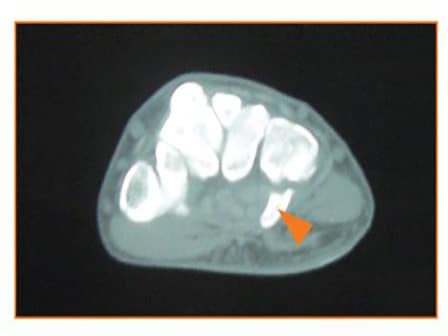Description
Hand, wrist and elbow injuries are common for golfers of all skill levels. The golf swing is a complex, coordinated series of motions. Golf injuries can result from poor technique, overuse or a single direct blow, like hitting a tree root.
There are many different ways to reduce the chances of an injury while golfing:
- Proper warm up and stretching is important.
- Gradually increasing the length and intensity of play as the season progresses can help avoid overuse injuries.
- Conditioning and core muscle strengthening can improve swing mechanics.
- Instruction with a teaching professional will refine your technique and increase your enjoyment of the game injury free.
Types of Golf Injuries
Golf injuries can include tendonitis, sprains, or fractures (broken bones).
- Sprains or ligament injuries to the wrist most often involve pain and popping in the wrist.
- Wrist tendonitis typically occurs in the leading hand (left hand for a right-handed player).
- Medial Epicondylitis, also known as “golfer’s elbow,” is a painful tendonitis on the inner aspect of the elbow, where the muscles that bend the wrist and fingers attach (Figure 1). Tendonitis on the outer aspect of the elbow (Lateral Epicondylitis) is more common.
- Hamate bone fracturesoccur when the club strikes the ground, forcing the handle against the bony hook (Figures 2, 3 and 4). The hook part of the bone can break, causing pain in the heel of the hand.
- Damaged blood vesselscan happen from the club handle repeatedly striking the palm. Hypothenar Hammer Syndrome describes an injury to one of the main arteries to the hand, where repeated blows weaken the vessel wall causing it to enlarge and sometimes to clot. This can cause local pain in the palm or disrupt blood flow going to the fingertips, producing pain, numbness, and color changes in the fingertips.
These injuries may arise by the repeated stress of practicing the golf swing or by similar gripping activities such as hammering and heavy lifting.
Treatment
Nonsurgical Options
Initial treatment consists of rest, ice, splinting and anti-inflammatory medications. Tendonitis can be improved by exercises designed to stretch and strengthen the muscles and tendons, which can be recommended by a hand therapist. Changing grips on the golf club may also help.
When symptoms persist, a cortisone injection may be used to reduce the painful area. Your doctor can assist you with this decision. For some patients, a surgical procedure (often with wrist arthroscopy) may be recommended. Casting may also be necessary for fractures.







